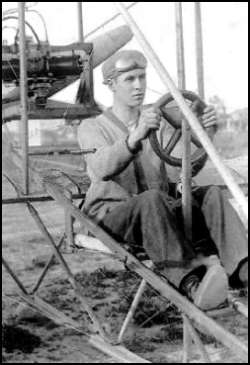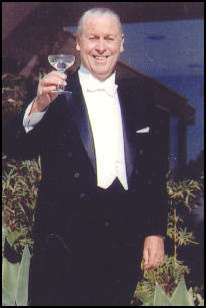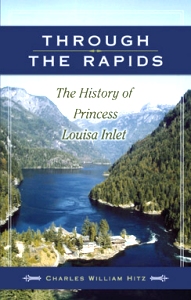

1894-1969 |
 |
 |
Seattle around 1910. Photo Courtesy Charles William Hitz (Chaz) from Betty Sunde's Photo Collection copyright 2000 - use only with permission |
Boeing Company Seattle around 1966 Photo Courtesy Charles William Hitz (Chaz) from Betty Sunde's Photo Collection copyright 2000 - use only with permission |
|
The Story of Thomas F. Hamilton By Charles William Hitz (Chaz) copyright 2000 - use only with permission In 1910, after finishing their experiments with the gliders they moved on to building propeller driven aircraft. At this point, there was a disagreement between Palmer and Hamilton. Palmer was no longer involved with the company and was totally removed from the partnership. It seems this split was so severe that Tom changes the name of the company to the Hamilton Aero Manufacturing Company. In 1911, he teamed up with a young yacht designer named Ted Geary to create a number of unique seaplane designs that were seen around Seattle's Lake Washington and various aerial demonstrations of the day. The total number of known aircraft built by Hamilton's Seattle company is estimated to be around 10 to 25 aircraft. His designs were a combination of other designs of the era and his own unique ideas incorporated into the aircraft. In 1914, a number of wealthy businessmen from Vancouver, British Columbia approached Tom Hamilton. They were looking for someone to take over the Stark flying school in Vancouver that was teaching their sons to fly for the Great War being fought over in Europe. Tom accepted the invitation and immediately moved his whole operation up to Vancouver BC and established the Hamilton Aero Manufacturing Ltd. And only one airplane was ever completed. It was a biplane patterned after a Curtiss tractor design, with two seats, a six-cylinder engine, and a tricycle landing gear. Unfortunately, the aircraft was not successful because it crashed in a muddy field outside of Vancouver. At the same time, Tom Hamilton had become very interested in the physics of propellers and also started making inquires about his possible involvement in the war effort for the United States. This was around 1917; at this point the U.S. just entered the war and needed experienced people, especially in aviation, to help the country establish an aviation industry in support of the war overseas in Europe. The US military was very interested in Tom Hamilton's background and requested that he come out east. The military leaders at the time wanted to keep most of their aviation resources closer to Washington, D.C., and not in the remote Pacific Northwest. A Milwaukee woodworking firm, the Matthews Brothers Furniture Company, needed an experienced person to run their new aviation division since a large military contract was signed to produce wood propellers for the Navy and Army. Tom Hamilton became their director of aviation in 1918. However, once the war ended so did Matthews Brothers as a company but Tom Hamilton bought their entire inventory of wood propellers and again started his own company called the Hamilton Manufacturing Company in Milwaukee, Wisconsin. Around this time, Tom Hamilton met and married Ethel Inez Hughes, from Milwaukee. The Hamilton's spent ten years in Milwaukee where it was established as one of the nation's major aviation hubs in the 1920's by building propellers and pontoons. In the mid 20's, William B. Stout's (a pioneer builder of all-metal aircraft) company was bought by the Ford Motor Corporation, and developed a similar aircraft called the Ford tri-motor or as it was affectionately called the "Tin Goose". Like the Junkers F13, it too had the same cantilevered wing and corrugated metal skin design built with the focus of hauling passengers and mail. In response, Tom and a number of shareholders in the Milwaukee community decided to build an aircraft out of metal, too. The result was a new company called the Hamilton Metalplane Company also of Milwaukee. And the first all-metal aircraft build by this company was the Hamilton Metalplane H-18 christened the "Maiden Milwaukee" in 1927. It's design came from the chief designer of the Metalplane Company of the time - James McDonnell. Mr. McDonnell had worked for Stout and Ford and incorporated similar features and new ideas into the construction of the metal "Maiden". The "Maiden Milwaukee" was the first plane produced by the Hamilton Metalplane Company and it achieved a number of awards. It first came in 2nd during the Ford Air Tour of 1927 and it won the Spokane Air Races of the same year. It was also given the distinction of being the first US air certificate for an all-metal airplane in the United States. The aircraft was redesigned and these modifications were introduced in the sequential new models of the Metalplane called the H-45 and H-47. Since most of the Hamilton Metalplanes used most of the products generated from the other Hamilton factory it was a cheaper than the Ford Tri-Motor. The Hamilton Metalplane was definitely a plane of its time. For it was the era when airlines were being developed with cargo/mail in mind instead of passengers. Unfortunately, the Hamilton Metalplanes' were not as successful as the Ford Tri-Motors. For Ford's marketing strategy was excellent stating it is safer to fly on three engines than on one. For this reason, the Hamilton Metal plane struggled in the market, for it was a good airplane developed ahead of its time and introduced too soon. In 1929, United Aircraft and Transport Company incorporated a number of aviation companies under one control. This resulted in the Metalplane Company becoming part of the Boeing Company as a separate division for a short time. Eventually, it was absorbed into the Boeing Company with all its patents and other assets becoming apart of the Boeing enterprise. In the mean time, Tom Hamilton became president of United Airports (a division of UA&T) and he was in charge of building the new Burbank airport in California. Even his whole family moved to Beverly Hills and eventually built a house out at Lake Arrowhead, California where he established a permanent residence. After the Burbank Airport opened with a big fan-fair in 1930, Tom Hamilton then became a foreign representative for the United Aircraft Export Company in Europe of which he would be come a leading individual for the survival of several aviation companies. Tom Hamilton started with the United Aircraft Export Company as a sales representative and was very successful. By 1936 he was president of that corporation. During the time from 1936-1940, Tom was successful in getting licensing rights for foreign countries to build Pratt & Whitney engines and Hamilton Standard variable pitch propellers. Tom Hamilton also knew what was going on politically because he moved around through these different ministries and could appraise this situation more clearly than most people. Back from one trip and in a meeting of the executive committee of United Aircraft he said, 'Don't discount this fellow Hitler.' 'To you, he's got a Charley Chaplin moustache, but whatever he may look on the outside, either he or somebody behind him has a strategic insight and a political foresight that is not available anywhere else in the world that I know of'". However, at the time, business interests came first and Tom was asked to continue in his position until the fall of France in 1940. At that time, Tom Hamilton and some his staff had to make an unorthodox route out of Europe through Spain. Once back in the States, Tom found a different sort of career in the hotel and entertaining business. He started developing a resort on the coast of British Columbia at the entrance of Princess Louise Inlet called Malibu (named after his yacht that had been designed by Ted Geary). It officially opened in July 1941 and catered to yachters, the wealthy, and the Hollywood crowd. However, the attack on Pearl Harbor changed Tom's plans and he again went back into the aviation industry to run Hardman aircraft in Southern California (which made nacelles for the B-17 bombers) during World War 2 for only a dollar a year. After the War, he reopened Malibu and also started an airline in support of the resort called Malibu SeaAero with a single war surplus Grumman Goose. After a few years, the resort did not become a financial success. Malibu was abandoned and sold. During his final years, he was involved with the Early Bird Organization where he would attend every function until his death. Tom also loved to paint and spent many years in Paris working on his craft. He was also the technical assistant to the 1966 movie "Those Magnificent Men And Their Flying Machines". Tom Hamilton died in 1969. His interests and achievements in aviation were more of business oriented. He was able to do and influence a number of factors during the beginning and golden years of the aviation industry. Editor's Note: This biography and photos were kindly supplied by Mr. Charles Hitz. He is currently researching the many aspects of Tom Hamilton's career with the hope of writing a detailed biography of this interesting man and his contributions to aviation. |
|
|
|
by Carl Schory, Aeronautical Engine Mechanic |
|
AVIATION COLLECTIONS Editor's Note: The collection of Thomas F. Hamilton, and several other aviation pioneers, are held in the archives at the University of Milwaukee. You may visit the site by clicking on the title above. |
|
|
 |
|
"Through the Rapids" researches the many stories, legends, and personalities of Princess Louisa Inlet. This book will certainly be a valuable asset to anyone interested in Princess Louisa Inlet, the historical aspects of British Columbia and that of the Pacific Northwest, or just the Malibu Club itself. THAT "THROUGH THE RAPIDS " HELPS ANSWER? How the Inlet was formed? Who named the Inlet Princesses Louisa and Why? Who has lived in the Inlet? Who was Tom Hamilton and why did he build the Malibu Club? What are the issues and concerns that have affected the Inlet now and in the past? Why did Tom Hamilton abandon the Malibu Club with such haste? To learn about the author and to order the book, click on the title above. |
|
Editor's Note: If you have any more information about this pioneer aviator please contact me. E-mail to Ralph Cooper |


|